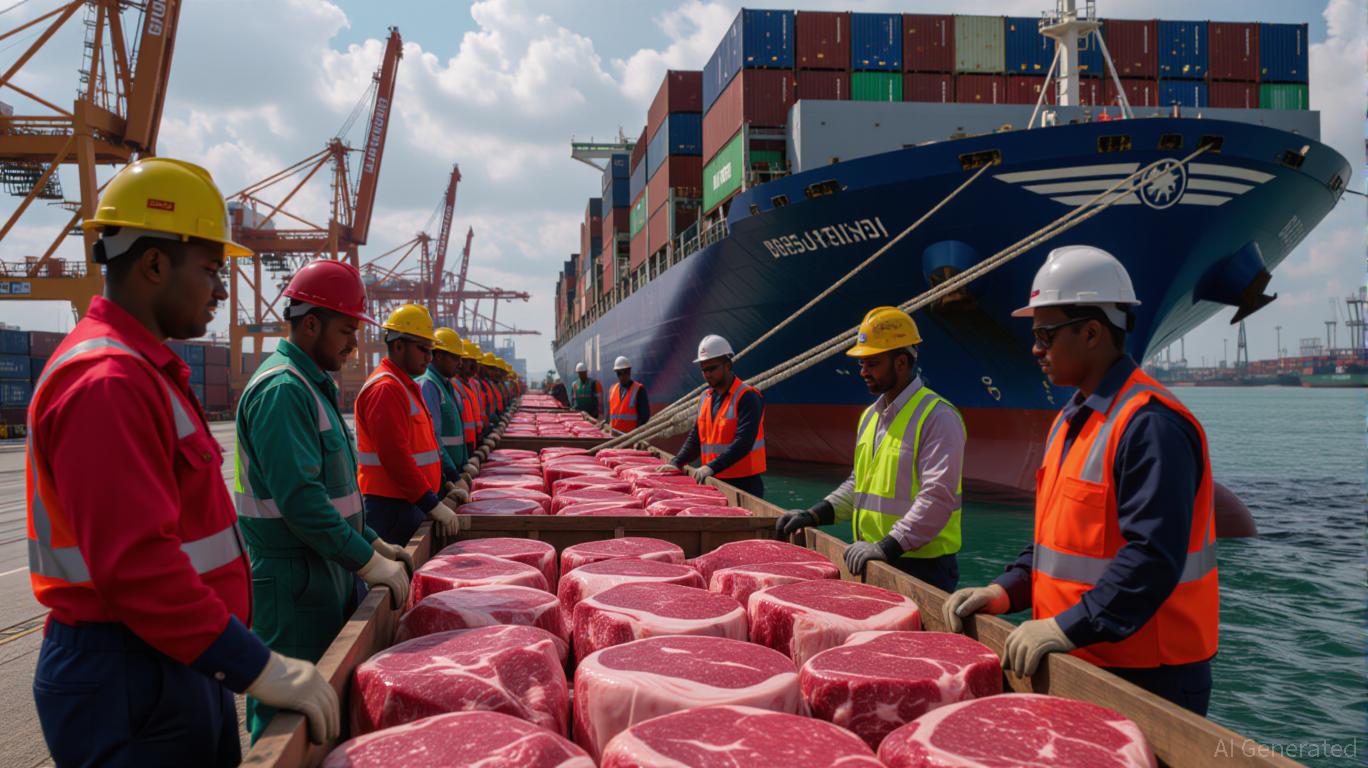
The global beef market is at a crossroads. With U.S. President Donald Trump’s proposed 50% tariff on Brazilian beef imports set to trigger a potential $1 billion sales loss for Brazil’s agribusiness sector, investors must grapple with the ripple effects of this trade disruption. The stakes extend beyond bilateral relations: this tariff could reshape global meat trade dynamics, accelerate diversification of export markets, and create both risks and opportunities for emerging market equities.
The Tariff’s Calculus: A $1 Billion Loss and Beyond
Brazil’s beef exports to the U.S. have surged in 2025, with 181,500 metric tons shipped in the first half of the year, generating $1.04 billion in revenue. This represents a 112.6% increase in volume and 102% in value compared to 2024. However, the imposition of a 50% tariff—on top of existing duties—would push the total import cost to 76.4%, effectively pricing Brazilian beef out of a key market.
The data paints a stark picture. U.S. imports of Brazilian beef plummeted by 80% from April to July 2025, as buyers rushed to avoid the impending tariff. The average price paid by U.S. importers jumped from $5,200 to $5,850 per ton in this period, reflecting both pre-emptive demand and tightening supply. Brazilian exporters have already exceeded their 65,000-ton annual quota, meaning most of these exports face higher tariffs. If the 50% surcharge is enforced, Brazil’s beef-packers could lose up to $1 billion annually, a blow to a sector that contributes 18.2% of Brazil’s total beef export revenue in 2025.
Geopolitical Risk and Sector-Specific Exposure
The U.S.-Brazil beef trade war is a microcosm of broader geopolitical tensions. For investors, the tariff threat highlights the vulnerability of emerging market equities to sudden policy shifts. Brazil’s agribusiness sector—represented by firms like JBS, Marfrig, and BRF—faces direct exposure to U.S. trade policies, while global meatpackers in Europe and Asia may benefit from Brazil’s redirected exports.
The knock-on effects are equally significant. Brazil’s overreliance on the U.S. market—now its second-largest export destination after China—could force a strategic shift toward diversification. The Brazilian Association of Meat Exporters (Abiec) has already opened offices in Washington D.C., Brussels, and Beijing to secure new partnerships. This pivot may boost demand in Asia and Europe, but it could also intensify competition among regional producers, driving down global prices and squeezing margins.
Investment Strategies: Hedging and Capitalizing on Volatility
For investors seeking to navigate this volatility, the following strategies merit consideration:
Agribusiness ETFs as a Hedging Tool iShares Global Agricultural Producers ETF (AGRA) and iShares MSCI Emerging Markets Agriculture Producers ETF (COW) offer diversified exposure to global agribusinesses, including meatpackers, fertilizer producers, and livestock feed companies. These funds can act as a buffer against sector-specific shocks, such as the U.S.-Brazil trade dispute.
Regional Producers as Tariff Winners
Countries like Argentina, India, and Australia could benefit from Brazil’s reduced U.S. exports. Argentina’s beef sector, for example, has already seen increased demand from U.S. buyers seeking alternatives. Investors might consider regional ETFs like the iShares MSCI Argentina Capped ETF (AR) or individual companies with strong export capabilities.
Diversification Across Crops and Markets
While beef is a focal point, Brazil’s agribusiness sector also dominates soy, coffee, and sugar exports. Diversifying into these sectors—via ETFs like the iShares MSCI Brazil Capped ETF (EWZ)—can reduce overexposure to meat trade risks.
Currency and Geopolitical Hedging
The Brazilian real (BRL) is highly sensitive to trade policy shifts. Investors could hedge against currency volatility using futures or options. Additionally, geopolitical risk indices (e.g., the GPR Index) can help assess the likelihood of further trade disruptions. The Bigger Picture: A New Era of Trade Uncertainty
Trump’s tariff threat underscores a broader trend: the rise of protectionism in global trade. For emerging market equities, this means heightened volatility and the need for agile investment strategies. While Brazil’s beef sector faces immediate headwinds, the long-term outlook depends on its ability to diversify markets and improve production efficiency.
Investors should also monitor how other countries respond to the U.S. tariff. Retaliatory measures from Brazil or its trading partners could escalate the conflict, further destabilizing global supply chains. In this environment, agility and diversification are key.
Conclusion
The U.S.-Brazil beef trade dispute is a cautionary tale for investors. While the proposed 50% tariff could trigger a $1 billion loss for Brazilian agribusinesses, the broader implications for global trade dynamics are far-reaching. By leveraging ETFs, regional diversification, and geopolitical risk analytics, investors can hedge against uncertainty and position themselves to capitalize on emerging opportunities in the agribusiness sector. In an era of escalating trade tensions, adaptability is the ultimate competitive advantage.
